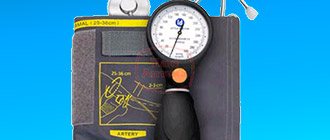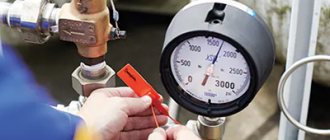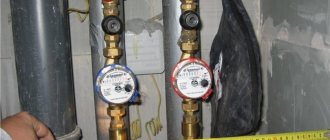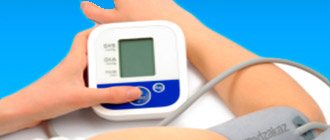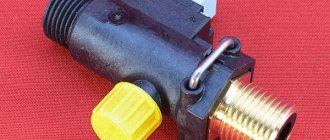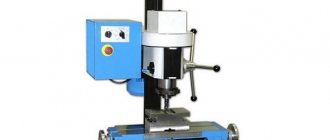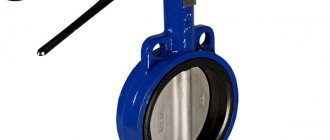Pressure gauges are compact mechanical devices that measure pressure. Various modifications of such devices allow them to work with liquids or gases, including steam and air.
Measuring pressure with such devices is necessary in various fields, including water and gas pipelines, heating boilers and compressors, autoclaves, compressed gas cylinders (including air rifles). Most of these devices are universal: they can be intended for measuring different readings: excess or pressure difference, atmospheric pressure, and can also be used as vacuum gauges.
What is this device?
A pressure gauge is a device for measuring excess, that is, artificially created, pressure of water, steam or other working medium.
In simple terms, it shows how much greater the water pressure in the pipe is than atmospheric pressure.
In everyday life, in the housing and communal services sector and in industrial enterprises, the most common devices are those with a spring in the form of an oval tube (named after Bourdon, the man who patented it). They are simple in design and inexpensive.
Externally, a water pressure gauge is a round object in a metal or plastic case. The dial with the scale is covered with plexiglass made of methacrylate or polycarbonate.
Why is it installed?
Measuring instruments are installed to monitor the state of the system . The pressure in the pipelines should not exceed a certain threshold value. At the same time, it must be sufficient to operate various devices.
To operate a shower with hydromassage, you need a pressure of 3-4 bar, a washing machine - about 0.5 bar, and a reverse osmosis filter - 2-6 bar.
Installation locations:
- pumping stations;
- boiler rooms;
- railway transport, automobiles, aircraft and water vessels;
- pressure pipelines;
- water heating devices;
- filtration systems.
Pressure gauges are purchased for personal use, in order, for example, to periodically monitor the pressure of the water entering the mixer.
They are permanently installed at pumping stations next to hydraulic accumulators and pressure switches to automatically turn the pump on and off. Often pressure gauges are part of automation units.
How to check water pressure without a pressure gauge?
You can find out the water pressure in the pipeline without using a pressure gauge.
All that is required for this is to use a homemade device from a transparent 2-meter hose, which is very easy to make with your own hands. Basically, the hose is used to obtain measurements of water pressure at the outlet of the tap. To find out the required indicators, one end of the hose is inserted into the tap, and the other is sealed with a stopper. After this, you need to let some water into the hose.
Before starting the “experiment”, you will need to fulfill 2 conditions:
- Place the hose in a vertical position;
- Move the lower end of the hose as indicated in the diagram.
Next, you can determine the approximate water pressure using the indicated formula: P=Patm*H0/H1, where:
- P – pressure in the system, measured in atmospheres;
- Patm is the pressure that is present inside the hose until the tap is opened;
- H0 is the height of the air column inside the hose until the tap opens;
- H1 – height of the air column after filling the hose with water.
It should be noted that the assembled device, according to the principle of operation, completely replicates an ordinary liquid pressure gauge.
Operating principle
In a deformation (spring) pressure gauge, water enters a curved tube made of copper alloy. The water pressure causes the tube connected to the mechanism to deform, which causes the needle to turn.
Pressure gauges with a single-turn spring are designed for pressures up to 100 atm. To measure higher pressures, springs with several turns twisted into a spiral or screw are used.
There are devices in which a thin two-plate membrane is installed instead of a tube. They are suitable for viscous or contaminated solutions, withstand strong vibrations, but are sensitive to temperature fluctuations.
What types are there?
List of main types of water pressure gauges:
- The most common are general technical spring pressure gauges for water, with a measurement range from 0 to 10 or from 0 to 6 atmospheres. The case diameter can be from 40 to 160 mm, most often 100.
- Boiler units – with a body diameter of 250 mm. They are needed to take instrument readings from a distance.
- Vibration-resistant pressure gauges - filled inside with a viscous liquid, in particular a glycerin solution or silicone oil. Measure pressure under conditions of strong vibrations. They are used at pumping stations, cars, compressors, trains.
- Corrosion-resistant pressure gauges – for working with chemically aggressive media.
- High-precision ones are needed for testing and crimping.
- Digital electronic - mechanical force is converted into an electrical signal. Readings are taken from the display, can be programmed, and some devices can be connected to a computer.
- Electrical contact (signaling) devices in which upper and lower pressure limits are set. If they are overcome, the electronic device is triggered and transmits a signal to the control device.
- Thermomanometers are devices that measure pressure and temperature in a heating or water supply system. On the front side there are two scales on which readings are taken.
Liquid pressure gauge
This type of pressure gauges first appeared in the 17th century. It originates from the experiments of Torricelli, one of Galileo Galilei’s students.
The Italian scientist immersed a tube sealed at one end and filled with mercury into a container. A certain amount of mercury was poured out of the tube, and a vacuum was created in its upper part. The mercury in the container was affected by atmospheric pressure, but the mercury in the tube was not. Accordingly, when the atmospheric pressure increased, the mercury column in the tube rose, and when it decreased, it fell.
The principle of operation of a liquid pressure gauge is generally similar to the principle of operation of the system from Torricelli's experience. This device is a system of communicating vessels - two tubes connected in a U-shaped structure. The system is half filled with liquid (usually mercury), and if only atmospheric pressure acts on it, the liquid level in both tubes will be the same.
If one of the tubes is connected to an inflating device or to a closed container, the measured pressure (P1) will act on the liquid in it. While the liquid in the second tube is affected only by atmospheric pressure (P2). When P1 changes, the liquid level in the second tube will also change.
By measuring the difference in column height Δh = h1 − h2, you can find out how much the pressure has changed ΔP = P1 − P2.
The measurement result obtained in centimeters of mercury is converted to pascals based on the following calculation:
How is it different from a sensor?
A pressure gauge is a device that makes it possible to determine pressure at any time. It can be equipped with a sensor, thermometer and other additional elements.
The sensor is part of the warning system . It only works at a certain pressure value. The sensor readings are converted into a signal that allows you to adjust the operation of the system in automatic or manual mode.
Criterias of choice
Before buying a device, you need to understand exactly what it is needed for and where it will be installed.
Important selection criteria:
- Measuring range. Rule: the working pressure in the pipeline should be no more than 2/3 of the maximum of the measurement scale, but not less than 1/3. If the pressure in the pipe is 5 atm, then you need to buy a pressure gauge with a scale of 0...10 atm.
- The accuracy class varies from 0.15 to 3. The lower, the more accurate. For a cold or hot water supply system, an accuracy of 1.5% is sufficient.
- The location of the fitting can be radial or end when it is from below; and axial or frontal, when he is behind.
- Operating temperature range.
- Temperature operating conditions.
- Working medium (water, steam, oil and so on);
- Diameter. It should be such that the device fits in the chosen location and the dial is clearly visible.
It is also necessary to pay attention to the connecting thread of the fitting. It can be metric - its parameters are measured in mm, denoted by the letter M, for example M20/1.5, which means the outer diameter is 19.9 mm, the inner diameter is 18.7 mm, pitch 1.5. Domestic manufacturers use it by default.
Pipe thread is designated by the letter G. G1/2" means an outer diameter of 20.9 mm, an inner diameter of 18.6, a pitch of 1.8 mm or 14 threads per inch.
The technical passport of a new device must contain a factory verification mark . A verification period of less than a year confirms that the device gives correct readings.
Checking pressure based on water flow
The second way to determine pressure is to perform calculations using data on the amount of water flowing from the tap. In addition to this data, you will also need:
- Find out the configuration of the pipeline and determine what material it is made of;
- Calculate the pipe diameter;
- Determine the intensity of liquid leakage;
- Determine the degree of opening of the tap.
To calculate the pressure, you will need a 3-liter measuring container and a stopwatch. Place the container under the tap and note the time during which it is completely filled with water.
It is possible to determine the approximate pressure after the operation, but the results obtained will be very inaccurate. Indeed, in any case, the jar will be completely filled in less than 10 seconds, which is why the resulting pressure value will be significantly less than according to the regulations. However, you should always start from the fact that a 3-liter container will be completely filled with water in 7 seconds or less. In this case, the pressure inside the pipeline will be closest to the regulated one.
Source
Where and at what price are they sold?
The price of a pressure gauge depends on its design. The simplest analog device costs about 120 rubles. If it is equipped with a thermometer, then the price doubles. Digital devices are tens of times more expensive.
Famous brands in Russia:
- ROSMA;
- Phystech;
- Manotom;
- METER;
- YUMAS;
- Heat control.
This is not a complete list. Foreign analogues, except for price, are not fundamentally different. The only exceptions may be highly specialized devices.
You can buy pressure gauges in an online store, directly from the manufacturer or a company that sells control and measuring instruments. They are sold in stores selling heating and water supply equipment.
Connection to the water supply system
To measure the pressure in the water supply system, you need to connect a pressure gauge to it.
Possible places to connect to the water supply in the apartment:
- shower hose;
- liner to the toilet cistern;
- hose for washing machine or dishwasher;
- connection to the faucet in the kitchen or bathroom;
- main filter.
In some cases, you will need to screw on an adapter to connect the pressure gauge. If there is no suitable adapter, then use a rubber hose, which is clamped with clamps.
Before depressurizing the system (opening the taps), you must turn off the water. If the pressure gauge is installed for continuous operation, then it must be protected from water hammer, fluid pulsations, and temperature changes.
To do this, install in front of it:
damper blocks - valves, three-way taps, needle valves that allow you to shut off water and relieve excess pressure;- siphon tube is used if the temperature of the working environment is more than 80℃;
- membrane separators protect against abrasive substances and aggressive media from entering the pressure gauge.
When installing a pressure gauge, you need to make sure that the dial is positioned vertically and the readings are clearly readable. It is forbidden to apply force to the housing when twisting it.
Content
From previous lessons we know that barometers - mercury and aneroids - are used to measure atmospheric pressure.
But how to measure air pressure, which differs significantly in value from atmospheric pressure? There are also special devices for this, which will be discussed further.
Operating conditions and reading indicators
The dial of a water pressure gauge indicates pressure. It can be measured in bars, Pascals or atmospheres .
The relationship between the units of measurement is approximately the following: 1 atm = 100 kPa = 0.1 MPa = 1 bar = 1 kgf/cm2 = 750 mm Hg. Art. This is an approximate ratio. If you need to carry out measurements with high accuracy, then take into account that 1 atm = 101.325 kPa = 1.01325 bar.
The pressure gauge can only be used under the conditions specified in the technical data sheet. Pressure must be applied smoothly to the device.
Operation is prohibited if:
- when pressure is applied, the arrow does not move;
- the instrument glass is broken or cracked;
- the needle jumps and does not return to the zero position after the pressure is released.
To be sure of the correct pressure gauge readings, it is necessary to carry out verification. New devices are verified by the manufacturer. Next, the time between verifications is controlled.
The permissible period is indicated in the passport and is 1 or 2 years. Verification is carried out at the Center for Standardization and Metrology or at an organization that has a license.
Tasks
Problem 1
Gasoline is poured into the canister and the height of the column is 0.6 m. The density of gasoline is 710 kg/m2. Determine the gasoline pressure at the bottom of the canister.
Solution:
We know:
h = 0.6 m;
ρ = 710 kg/m2.
The acceleration g is 9.8 N/kg.
According to the formula that determines the pressure of a liquid on the walls of a vessel:
Р = ρgh;
P = 710 × 9.8 × 0.6 = 4174.8 Pa = 4.7 kPa.
Answer: 4.7 kPa.
Possible breakdowns and ways to solve them
The cause of device failure is poor-quality manufacturing material or violation of operating rules , for example, exceeding operating pressure or use at a temperature for which it is not designed.
If there is a seal on the pressure gauge after verification, then it cannot be opened. In this case, you need to replace the device or send it for repair to the same company that carries out the verification.
But it is not always profitable. It is often cheaper to install a new pressure gauge.
Breakdowns that can be fixed:
- microcracks in the tube are sealed;
- bent and broken hands are replaced;
- a faulty spring that ensures the rotation of the arrow must also be replaced.
If the teeth of the transmission mechanism are worn out or the spring tube is bent, then such a pressure gauge cannot be repaired.
Regulations
An explanation of what the accuracy class of a pressure gauge is given by GOSTs, in particular R 8.905:
The main acts on accuracy for pressure gauges are GOSTs R 8.905 and 2405. Documents related to them and those to which they contain links also serve as sources of standards. Further, we will illustrate the article with excerpts of text in the form of images from these two regulatory documents.
For specific areas, the level of correctness can be established by the standards in force for it, including labor protection and safety, for example, for pressure vessels (cylinders and the like) there are the following standards.
The issue of errors is regulated and specified by acts for certain narrow areas, for example, for well pumps:

